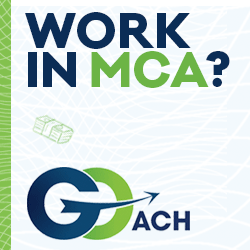Results 1 to 9 of 9
Threaded View
-
02-19-2015, 09:20 PM #1Member








 Reputation points: 1080
Reputation points: 1080
- Join Date
- Nov 2014
- Posts
- 76
Why the 50% rule on a payoff? And do all have this rule?
Was hoping someone could enlighten me as to why funding providers enforce the "50%" rule when funding a new advance that is going to pay off a balance...
I keep running across merchants that were sold a 6-month advance at a 1.40 and now realize they overpaid and could qualify for an A or B paper lender. They don't really want/need more money but just want to pay off their remaining balance and have a lower daily payment.
For example, I have a merchant that received $60k at a 1.39 on approx 6-month deal. They are paying around $650 per day. Their balance is down to around $45k.
They would like to pay off the $45k with a new $45k advance but at a lower more reasonable rate--say 1.25 on a 6 month so daily payment could go down to approx $426 per day. However, funding providers all seem to say that they would have to qualify for 2x their balance, or $90,000 in this example. Why is this the case? Why does a funder insist on this? In many cases, the merchant can easily qualify for the $45k but not the $90k so is DQ'ed...why wouldn't the funder not want to do the deal at $45k and get a new reliable merchant on their paper?
Are there any funding providers out there that do NOT enforce this rule and allow 75% to 100% of proceeds to go towards payoff?
Similar Threads
-
pharmacy for 1st pos payoff
By WhoisKingsley in forum Deal BinReplies: 5Last Post: 01-07-2015, 11:39 PM -
NEED SOMEONE TO PAYOFF 60k BALANCE AND GET MORE $$$$
By getlikwid247 in forum Deal BinReplies: 3Last Post: 10-22-2014, 12:04 PM -
Payoff letters.....
By fundgorilla in forum Merchant Cash AdvanceReplies: 6Last Post: 09-24-2014, 01:28 PM -
Spam Alert - Rule Reminder
By admin in forum Merchant Cash AdvanceReplies: 0Last Post: 09-10-2014, 03:48 PM -
payoff of 120k
By merchantcatalyst in forum Deal BinReplies: 3Last Post: 05-21-2014, 08:05 PM


 Reply With Quote
Reply With Quote















